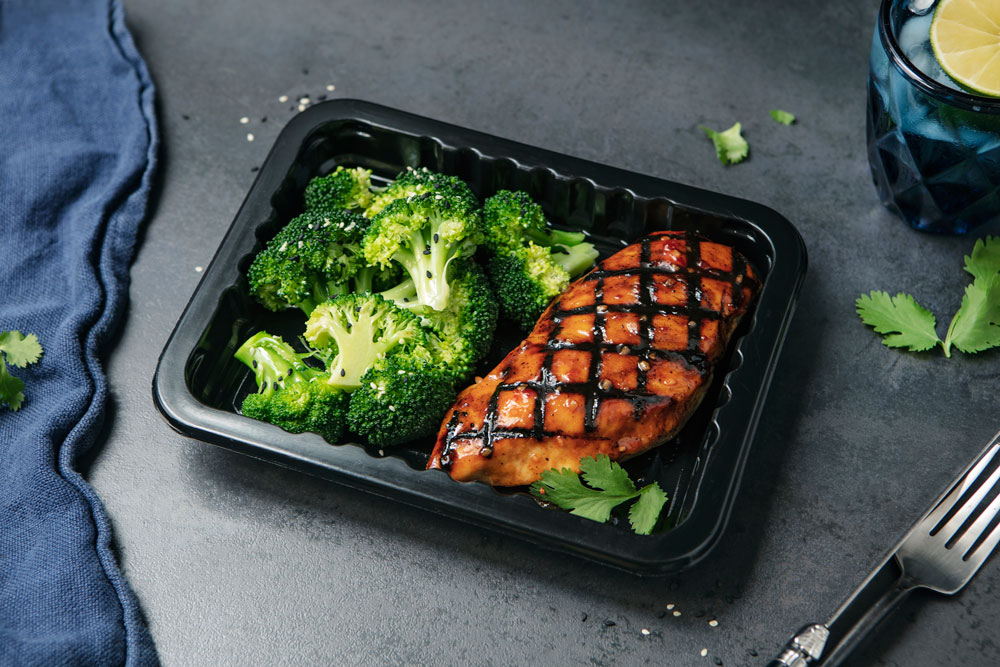ARTICLE AT A GLANCE
As we get older, resting metabolic rate (RMR) tends to decrease. This means we are burning fewer calories at rest than we did at a younger age. Decreased activity levels also leads to decreased strength and muscle mass and fat gain (especially in the midsection).
Lower activity levels and loss of muscle mass are two of the main factors in decreasing metabolism. It can become a cycle of less activity, less muscle mass, fat gain and disrupted glucose and fat metabolism.
The good news: it doesn’t have to be that way. The key to staying out of this cycle is activity.
You’re more likely to maintain muscle with higher activity levels. Start with simple everyday tasks to stay more active. Get a standing desk, take the stairs rather than the elevator, park in the back of the lot, etc.
Overall activity levels are important. However, the most effective activity for maintaining and increasing muscle mass is resistance training.
The 7 Best Exercises to Improve Metabolism
The best exercises to improve metabolism are multi-joint exercises. They use the most energy, and demand work from the most muscle fibers.
Focusing most of your exercise efforts towards these exercises will allow you to build the most muscle mass and boost your metabolism.
Depending on your training experience, that could mean bodyweight exercises, light bands, or traditional strength training with free weights, pulleys, and machines.
Exercise 1: Squat
Variations: There are countless squat variations. Depending on your experience level and mobility, that may be a bodyweight squat through a partial range of motion, or a full squat with a barbell on your back, or somewhere in between.
Choose the appropriate one for your ability.
Benefits: Squats of any variation have a number of benefits to your musculoskeletal health. They help strengthen the muscles, tendons, and ligaments in your lower body and will also improve your core muscles, activated during squats to support your lower back.
When executed with proper form, squats can help reduce the risk for injury as they can help improve posture and lower body stabilization. Additionally, a compound movement such as the squat, can burn some serious calories!
Sample Exercise: Squat with Dumbbells
Exercise 2: Hip Hinge
Variations: Hip hinge movements include deadlift variations, good mornings, cable pull-throughs and back extensions.
Benefits: The hip hinge movement pattern is one you perform every day, without even thinking about it. From picking up something off the floor, to carrying groceries in from your car, the hip hinge is used frequently – recruiting multiple muscles in your posterior chain (glutes, hamstrings, lower back). Developing a strong posterior chain and core can lead to reduced back pain, improved balance and increased athletic performance.
Sample Exercise: Barbell Deadlift
Exercise 3: Single Leg Movements
Variations: Split squats, step-ups, and lunges are all great options for single leg exercises. Start with the appropriate variation for your ability – working from a short range of motion to a longer range of motion.
Benefits: Single leg exercises will help develop your stabilization and balance, and also improve muscle imbalances. These unilateral movements allow you to pinpoint weak areas that could pose potential injury risk over time.
Sample Exercise: Front Steps Ups
Exercise 4: Horizontal Press
Variations: Horizontal press can be done as any variation of the bench press: flat, decline or low incline with a barbell or dumbbells. Push-ups are another option and can be done from your knees, feet on the floor, or with feet elevated.
Benefits: Horizontal pressing uses a lot of muscle mass with significant resistance. Demanding exercises with enough resistance is exactly what’s needed to improve metabolism!
These exercises help develop range of motion and stability for the shoulders and also help increase strength in the chest and triceps as well.
Sample Exercise: Push-Ups
Exercise 5: Row
Variations: Any row variation using barbell, dumbbells, a pulley, or a machine.
Benefits: The row targets your back, namely the latissimus dorsi and rhomboids, which is a key muscle group responsible for protecting your spine. Strengthening these muscles improve your spinal stability as well as your posture and reduces risk of back injuries.
Sample Exercise: Bent Over Row
Exercise 6: Vertical Pulling
Variations: Vertical pulling exercises can be down with variations of the lat pull-down (with a pulley or plate loaded machine) or chin-up/pull-up variations.
Benefits: If you overuse pressing exercises and neglect pulling exercises that strengthen your lats, upper traps, and rear delts, you’re setting yourself up for strength imbalances that will wear down your shoulder joints. Incorporating a mixture of vertical and horizontal pulling exercises will go a long way toward keeping your shoulders strong and pain-free.
Sample Exercise: Band Assisted Pull-Up
Exercise 7: Vertical Press
Variations: Vertical presses include any variation of an overhead press with a barbell, dumbbells or a machine. If shoulder mobility doesn’t allow for an overhead press, substitute for a high-incline bench.
Benefits: Vertical pressing exercises are beneficial for long-term shoulder health. Overhead pressing also improves core strength because the upper back, lower back, and abdominals must stabilize the body.
Sample Exercise: Standing Arnold Press
Perform at least one exercise from each category a minimum of once per week, ideally covering each category 2-3x per week.
Tony Soaib has worked as a personal trainer and strength and conditioning coach since 2007. Since then, he’s worked with a wide range of clients including athletes from MLB, MiLB, NFL, Nippon Professional Baseball, United Soccer League, and NCAA, as well as Military Special Forces personnel, and executive clients. You can contact him @tonysoaib on Instagram.






